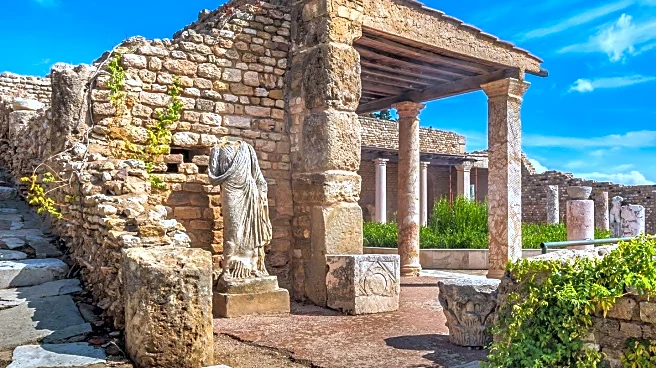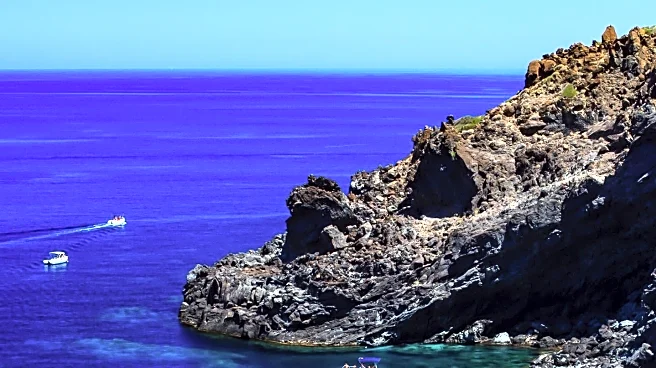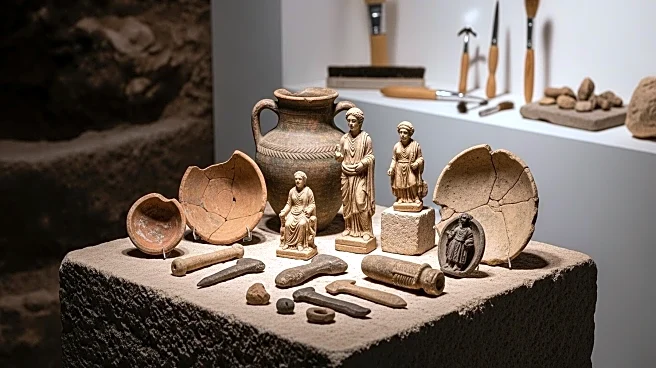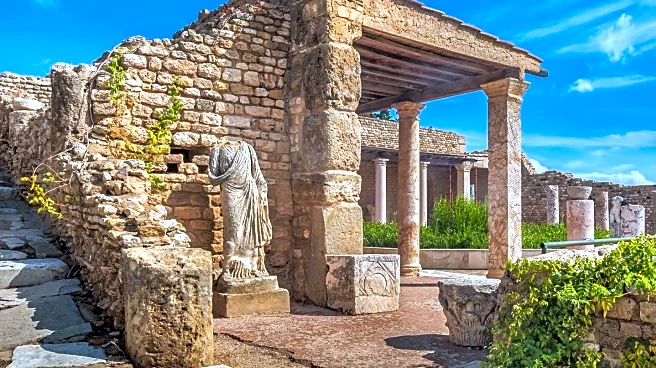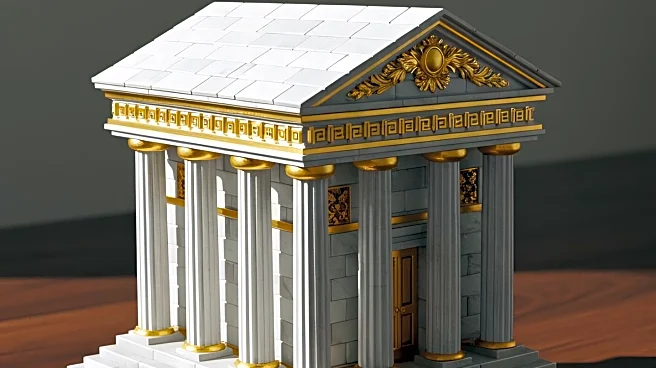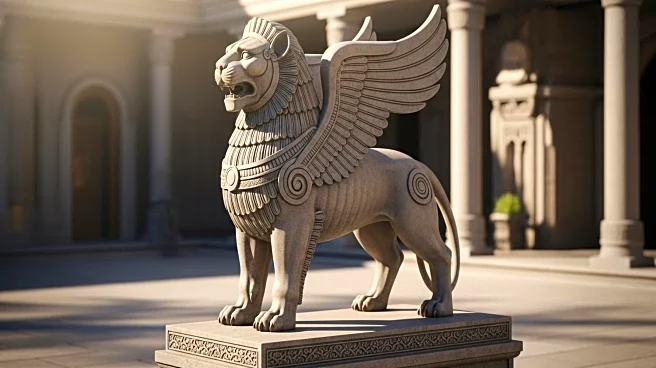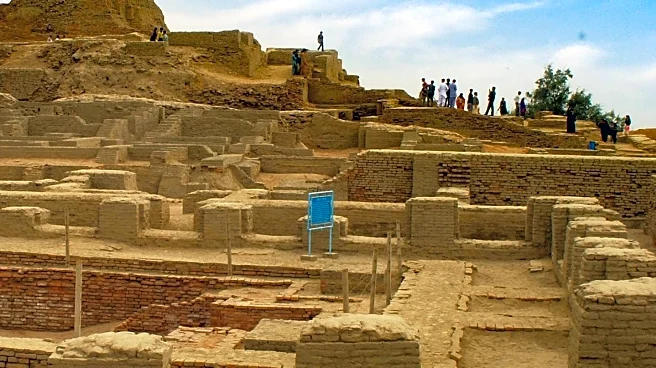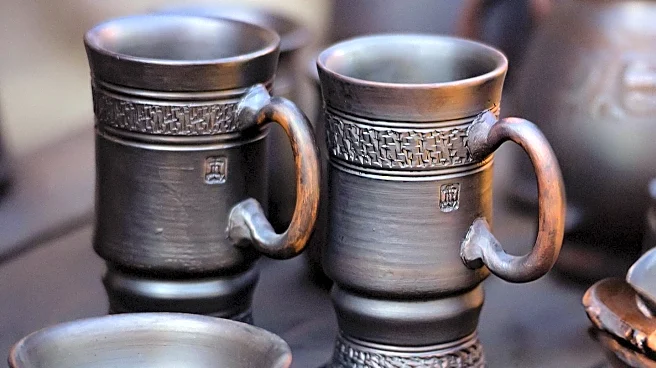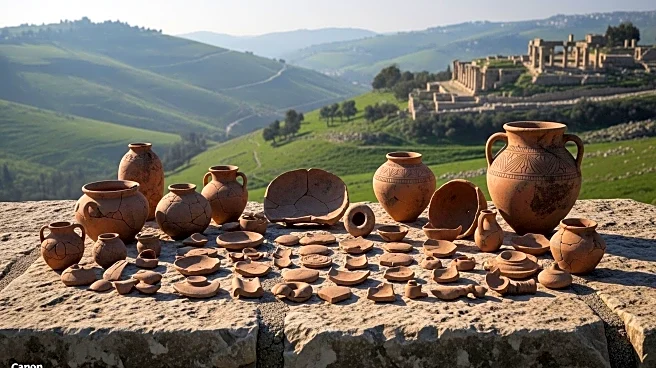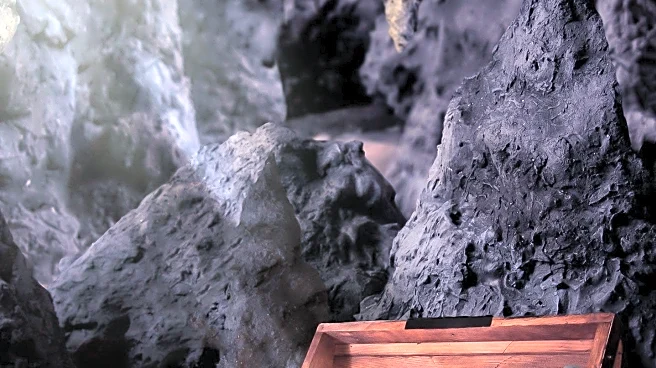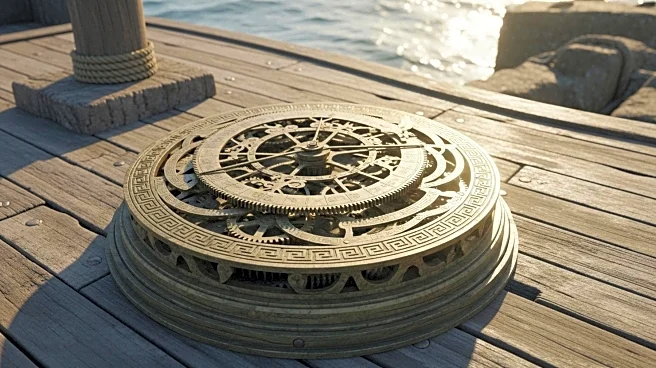What is the story about?
What's Happening?
Archaeologists in Albania have discovered a Roman-era tomb near the village of Strikcan, marking the first of its kind in the country. The tomb, dating from the 3rd to 4th century C.E., was found after locals reported unusual stone formations. The site revealed inscriptions in Greek with Latin meanings, indicating the burial of a wealthy individual named Gelliano. Artifacts such as gold-threaded fabric and glass plates suggest the tomb belonged to upper-class Romans. Despite evidence of looting, the discovery offers significant insights into Albania's ancient history.
Why It's Important?
This discovery is crucial for understanding the Roman influence in Albania, a region that was part of the Roman Empire for centuries. The tomb provides valuable information about the social hierarchy and cultural practices of ancient Romans in the Balkans. As Albania experiences a tourism boom, the site could become a key attraction, enhancing cultural heritage and economic growth. The find also underscores the importance of archaeological research in uncovering historical narratives and preserving cultural identity.
What's Next?
Local authorities plan to develop the tomb into a tourist attraction, capitalizing on Albania's growing tourism industry. Researchers continue to decipher additional inscriptions, which may reveal more about the region's historical context. The site could attract international interest, fostering collaboration between archaeologists and historians to further explore Albania's Roman past.
AI Generated Content
Do you find this article useful?
